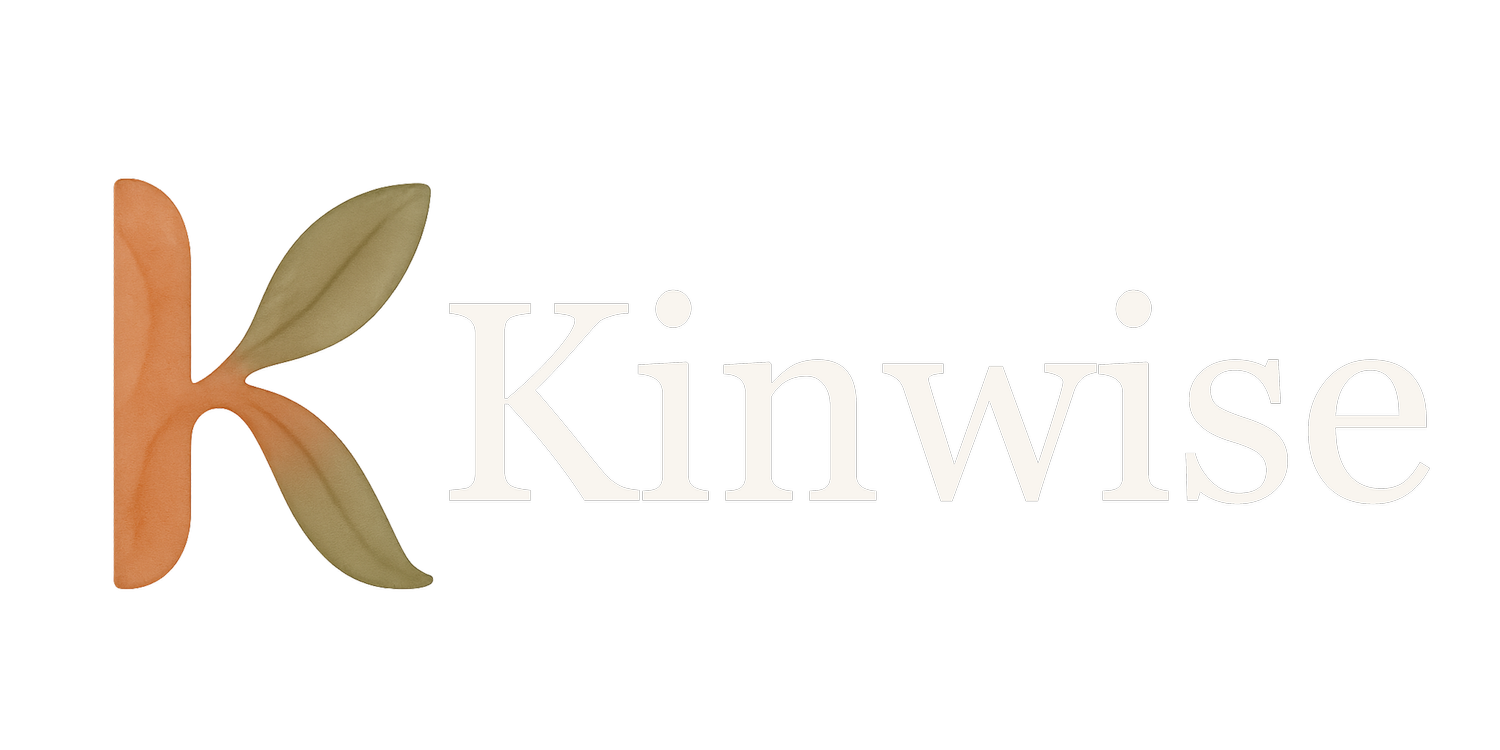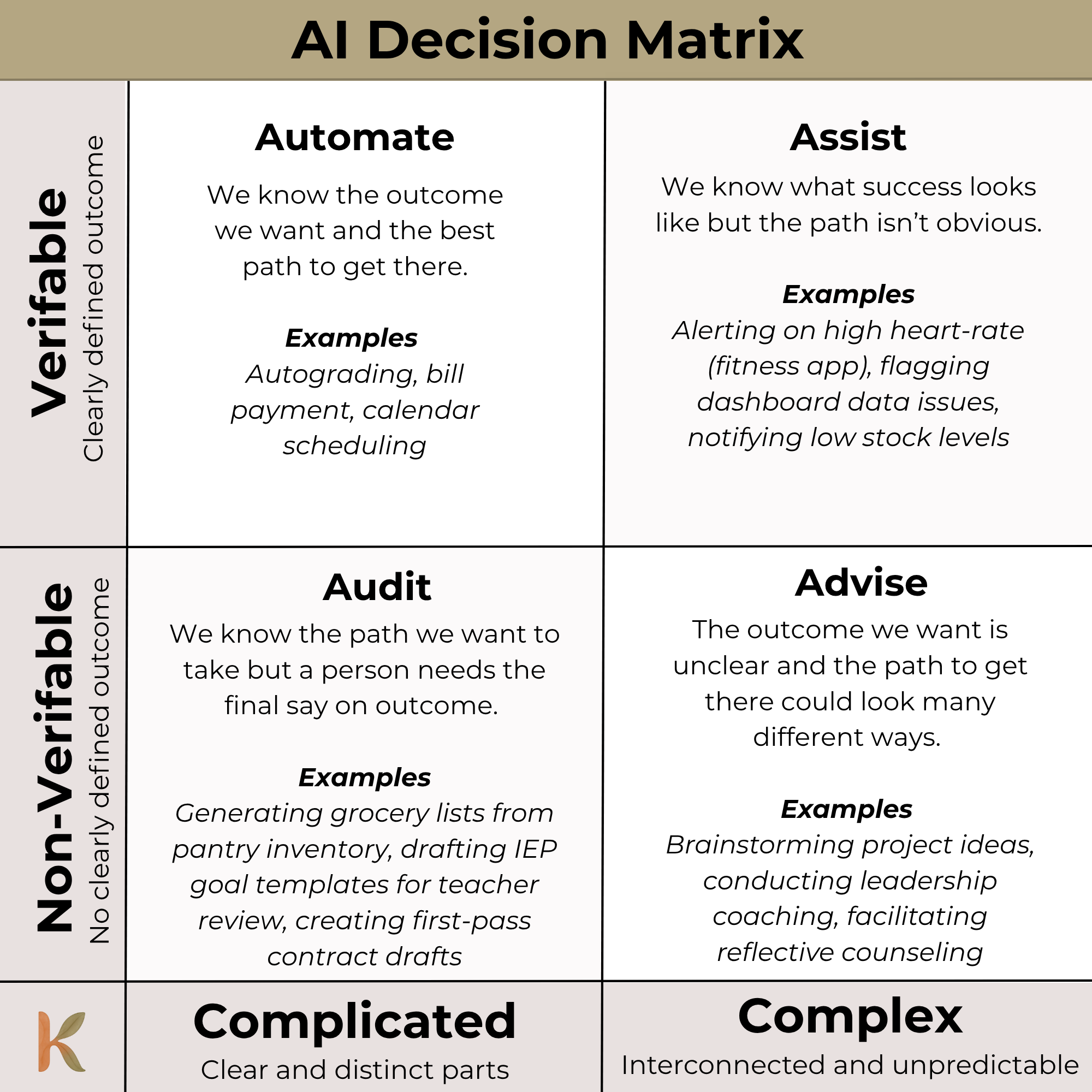An AI Decision Guide for Educators
I’m a second-year teacher. I have a new pencil-sharpener in the room
I’ve made a simple procedure: raise your hand. Go to the pencil sharpener.
The reality? Ronnie breaks his pencil, walks by Janice, and pulls her braids. The class dynamic shifts from focused to chaos.
Classrooms aren’t machines. Schools are complex ecosystems, filled with the unpredictable insanity and beauty of hundreds of human beings doing life together.
Chaos like this reminds me that AI helps most when we can match the tool with the task.
The Two Quick Questions
Before you open ChatGPT or sign up for a new AI-driven app, ask:
Can I list every step?
Yes ➜ Complicated (think changing projector bulbs).
No ➜ Complex (think classroom culture).
Can anyone verify the answer with a key?
Yes ➜ Verifiable (multiple-choice grading).
No ➜ Non-verifiable (what makes a “great” discussion?).
Plot those answers on the AI Decision Matrix and you’ll know whether to Automate, Assist, Audit, or Advise. If an AI tool promises to provide answers for a complex system, you may want to pause and reevaluate!
1. Automate | Complicated + Verifiable
“Let the AI do the boring stuff.”
Pain point: Unit-test piles after a long day
AI wins: Auto-grading forms, bulk-mailing missing-work reminders, syncing scores to your SIS
Teacher tip: Double-spot-check the first five papers
2. Assist | Complex + Verifiable
“Flag the problem; humans fix it.”
Pain point: Quiet disengagement you don’t see until report cards.
AI wins: Dashboards that ping you when Jamal’s assignment streak breaks or when absences hit a threshold.
Teacher tip: Treat alerts like a nudge, not a directive. The “why” still lives with you.
3. Audit | Complicated + Non-Verifiable
“Draft the thing; I’ll make the call.”
Pain point: Blank-page panic writing IEP goal baselines or Friday lesson plans.
AI wins: First-pass IEP goals, differentiated vocab lists, exit-ticket questions.
Teacher tip: Use the draft as clay. Mold it with your knowledge of students’ quirks, needs, and home languages.
4. Advise | Complex + Non-Verifiable
“Brainstorm with me, but don’t pretend you know Jaquan.”
Pain point: Figuring out why Jaquan won’t stay in his seat during writing workshop.
AI wins: Generating reflective questions (“What environmental cues trigger him?”) or suggesting three new seating charts.
Teacher tip: End every AI brainstorm by asking yourself, “Which idea respects Jaquan’s story and our class norms?”
Reflect
AI shouldn’t predict Ronnie pulling Janice’s braids, and AI shouldn’t make the call on how I respond to that decision. We need humans to be fully present in these moments.
I don’t want AI to predict Ronnie’s likelihood of misbehaving, and I don’t want AI to tell an adult how to respond to the misbehavior. I want a human in relationship with these students to respond with care and clarity.
But AI can help relieve the teacher of some other decisions to create space.
Take a moment and look at your to-do list.
What areas can AI support? How should AI support?
Intention is key.


